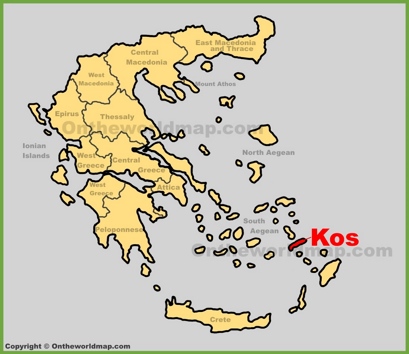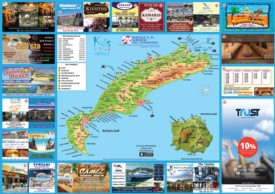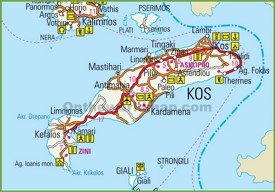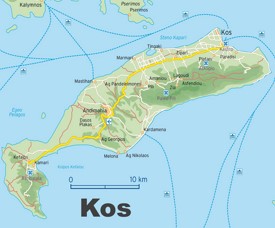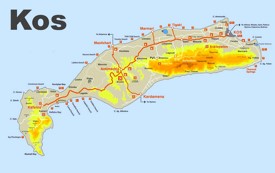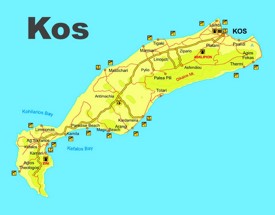Kos Maps
Online Map of Kos
About Kos
Kos is the third-largest island of the Dodecanese, located in the southeast Aegean Sea near the Turkish coast. The island covers 114 square miles and has a population of approximately 34,000 residents. Kos Town, the capital and main port, is situated on the northeast coast and features an eclectic architectural mix resulting from the island's complex history.
Kos is the birthplace of Hippocrates (c. 460-370 BCE), the ancient physician known as the "Father of Medicine." The Plane Tree of Hippocrates in Kos Town, though not actually 2,400 years old, stands near the site where Hippocrates allegedly taught his pupils. The Ancient Agora, the Asklepieion (a sanctuary and healing center dedicated to Asclepius located 2.5 miles from Kos Town), and the Ancient Odeon are significant archaeological sites. The Asklepieion, built on terraces on a hillside, served as both a healing temple and medical school.
Italian rule (1912-1943) left a strong architectural legacy, particularly evident in buildings around the harbor, including the market building and government offices designed in Art Deco and Fascist architectural styles. The Castle of the Knights (Neratzia Castle) guards the harbor entrance, built by the Knights of St. John in the 14th and 15th centuries. The ancient city ruins are scattered throughout Kos Town, with Roman mosaics, columns, and the Western Archaeological Site (Ancient Gymnasium) preserved among modern buildings.
Outside the capital, significant sites include the traditional mountain village of Zia with views across the island and toward Turkey, and Kefalos on the southwest peninsula, near which lie the ruins of ancient Astypalaia. The island features numerous beaches, particularly along the south coast, including Tigaki, Marmari, Kardamena, and Paradise Beach. Kos has a flat terrain compared to most Greek islands, making it popular for cycling. The economy is heavily based on tourism, with Kos Island International Airport providing extensive connections. The island produces white wines, particularly from the Assyrtiko grape variety.
The Facts:Region: South Aegean.
Regional unit: Kos.
Cities: Dikaios, Irakleides, Kos.
Population: ~ 34,000.
Area: 114 sq mi (295 sq km).
Maps of Greece
Cities of Greece
Greek Islands
Peninsulas of Greece

